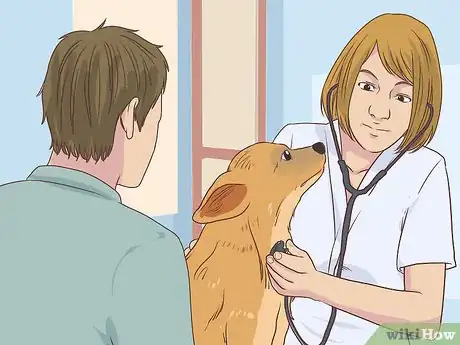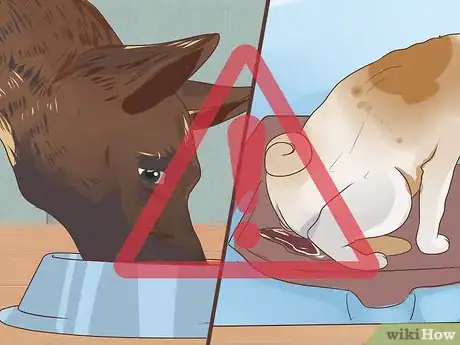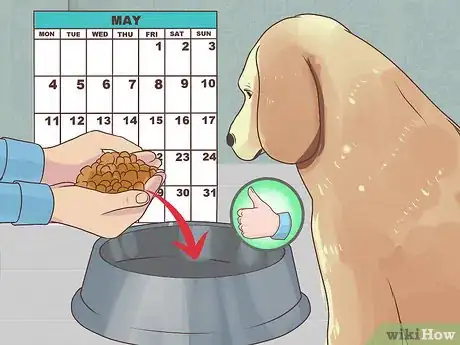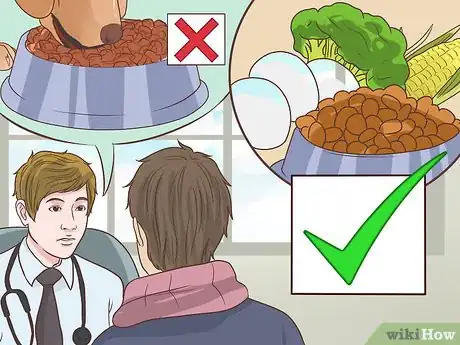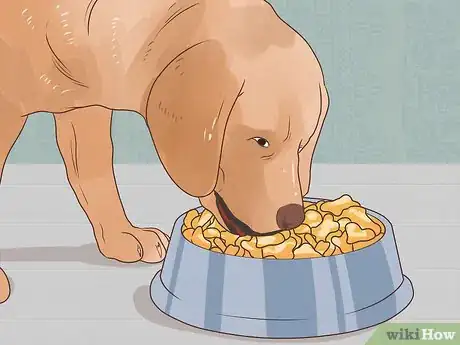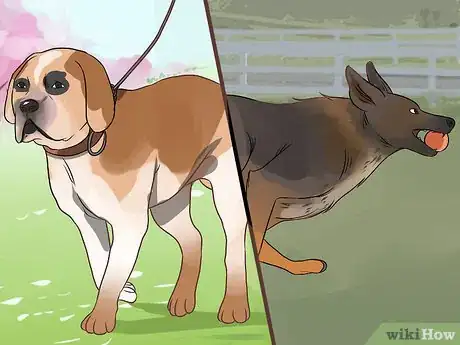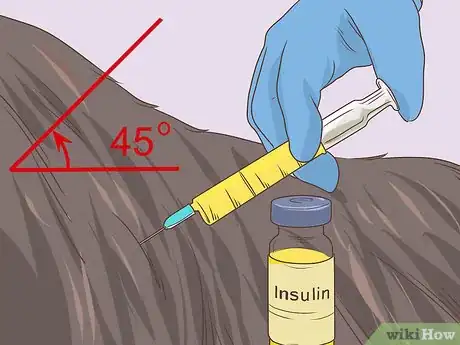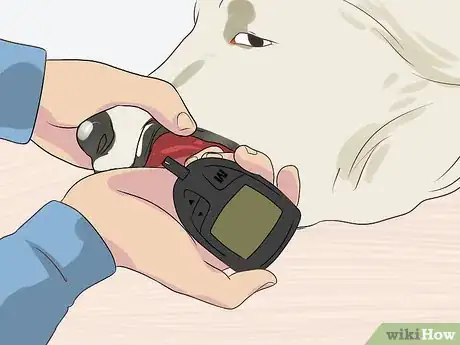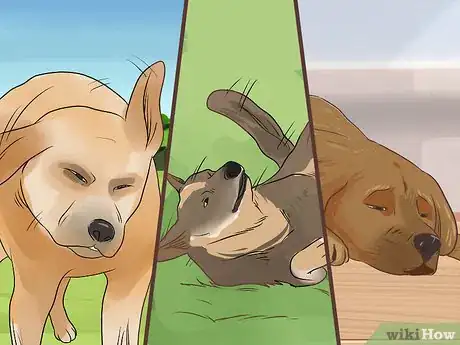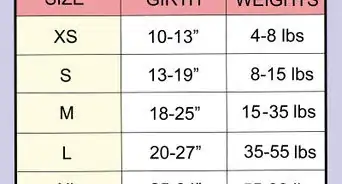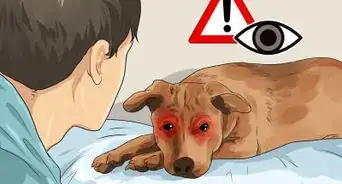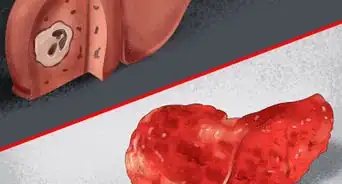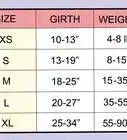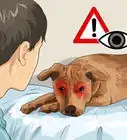This article was co-authored by Pippa Elliott, MRCVS. Dr. Elliott, BVMS, MRCVS is a veterinarian with over 30 years of experience in veterinary surgery and companion animal practice. She graduated from the University of Glasgow in 1987 with a degree in veterinary medicine and surgery. She has worked at the same animal clinic in her hometown for over 20 years.
This article has been viewed 14,053 times.
Diabetes is a common problem for older dogs. Though diabetes can cause many complications, your dog can also live a happy life with the condition. To help manage your older dog’s diabetes, work with your vet to come up with a treatment plan, make sure to manage your dog’s weight, and monitor your dog for any changes in symptoms.
Steps
Seeking Medical Attention
-
1Take your dog to the vet. To help manage your dog’s diabetes, you should take them to the vet for regular checkups. This is true even if your dog’s diabetes seems to be under control. The best way to keep your dog’s diabetes under control is to let the vet test their blood to check their blood sugar levels.
- Make sure to schedule a check-up at least twice a year if your dog is stable. If your vet recommends more frequent visits, follow their advice.
-
2Develop a diabetes management plan. You and the vet will work together to develop a diabetes management plan for your dog. You will be the primary caregiver for your dog’s diabetes treatment, so you need to make sure you know what is required to keep your dog healthy.[1]
- Your vet will outline the dosage of insulin for your dog and help you learn how to give injections.
- Your vet will give you a diet for your dog, along with exercise recommendations.
- Your vet will suggest a glucose monitoring system for your dog.
- You will also be instructed about any warning signs you should look for.
Advertisement -
3Monitor for diabetes symptoms. Diabetes is a common ailment in senior dogs. If your dog doesn’t have diabetes yet, you should monitor for symptoms of diabetes. The most common symptom is an increased appetite without any weight gain. Other symptoms include:
- Increased thirst without any change in activity level
- Increased urination, or "accidents" in the house
- Increased appetite
- Weight loss
Managing Your Dog’s Weight
-
1Maintain your dog’s weight. One way to help manage your senior dog’s diabetes is to keep their weight within a healthy range. You should make sure that your dog does not end up overeating. Obesity is common in older dogs, and this can make their diabetes worse.
- Older dogs need fewer calories than younger dogs. Their energy needs and activity levels decrease, so you should feed your aging dog less food than you used to.
- Many older dogs may eat out of boredom or because they forget that they have eaten. Keep your dog on a food schedule and watch their weight to make sure they don’t start gaining weight.
-
2Consider changing your dog’s food. When your dog is older, you should make sure to feed them the best food you can. This is especially important when your dog has diabetes. When your dog has diabetes, the food should contain high-quality protein, fiber, and complex carbohydrates. The food may need to be low-fat, too.[2]
- Talk to your vet about the best diet for your senior dog. Some senior dogs with diabetes may do well with a senior blend of dog food, while others may do well with a diet full of food prepared at home.
-
3Feed your dog hard dry foods. Your senior dog should have a diet of hard, dry foods instead of soft foods. Soft foods can cause complications for diabetes because it causes more glucose to build in the body. It is also important to make sure that your dog eats before insulin injections, to help lower risk of hypoglycemia. [3]
- If your dog is unable to chew hard foods, talk to your vet about other food options. You may be able to feed your dog a diet of people food instead.
- Time the food and insulin by offering your dog a small snack. Once they eat it, give them their insulin injection. Then, give them their meal immediately afterward.
- If your dog won't eat the snack or their regular food, only give them half their insulin dose for that day, and if they refuse to eat for two or more meals in a row, contact your vet immediately for advice and treatment.
-
4Exercise your dog. Another way diabetes can be managed in older dogs is to make sure your dog gets exercise. Exercise can help by reducing weight and lowering blood glucose levels. Older dogs can still exercise, though they may be slower, have to exercise for a shorter duration, or be unable to exercise at such a strenuous level.
- For example, you can still take your dog for a walk or play fetch with them. They just may not be able to do the activity for as long as they used to.
- Consistency is important—too much exercise could cause significant drops in glucose levels.[4]
Managing Your Dog’s Insulin
-
1Give your dog insulin. Many older dogs with diabetes need daily insulin injections. Insulin shots are usually given in the dog’s back by folding the dog’s skin and using a special syringe or a VetPen. You should hold the needle at a 45-degree angle in your dominant hand. Push the plunger down with your thumb as quickly as possible so as not to prolong your dog’s discomfort.[5]
- When your vet prescribes insulin, they will show you the proper way to give your dog insulin injections. Use only the syringes supplied by your vet, and use them only as directed. Do not repeat an injection if you cannot tell whether the injection went in.
- Rather than injecting the same spot repeatedly, which may cause pain for your dog, vary the injection site a little every day.
-
2Monitor your dog’s glucose level. Often, vets will instruct you to check your dog’s glucose levels so you can monitor their condition. This is generally done using a glucose meter or a dipstick provided by your vet. You should use the meter or dipstick to check your dog's urine on a daily basis.[6]
- When you check your dog’s glucose level using the provided meter, you will have to prick the dog’s skin on a hairless area to get a drop of blood.
- The urine dipstick helps monitor your dog for glucose levels as well as conditions like ketosis. If ketones appear on the dipstick after testing, consult your vet immediately for advice.
- Log the dog’s glucose level so you can discuss it with your vet, and schedule an immediate vet visit if your dog shows any signs of an illness that can destabilize a diabetic pet, such as a stomach ache, a sore mouth, or an ear infection.
-
3Monitor for symptoms of too much insulin. Dogs with diabetes can get too much insulin, which can lead to complications. If your dog’s insulin levels are too high, your vet may need to adjust the injections. If you notice any signs of too much insulin or illness like an upset stomach, sore teeth, or ear infections, take your dog to the vet immediately. Symptoms[7] include:
- Tired and unresponsive
- Shaking
- Unsteady gait
- Lethargy
- Falling
- Seizures
Expert Q&A
-
QuestionWhat treats can I give my diabetic dog?
 Pippa Elliott, MRCVSDr. Elliott, BVMS, MRCVS is a veterinarian with over 30 years of experience in veterinary surgery and companion animal practice. She graduated from the University of Glasgow in 1987 with a degree in veterinary medicine and surgery. She has worked at the same animal clinic in her hometown for over 20 years.
Pippa Elliott, MRCVSDr. Elliott, BVMS, MRCVS is a veterinarian with over 30 years of experience in veterinary surgery and companion animal practice. She graduated from the University of Glasgow in 1987 with a degree in veterinary medicine and surgery. She has worked at the same animal clinic in her hometown for over 20 years.
Veterinarian Avoid highly processed treats and snacks which are high in refined sugars, and instead, offer those things which we consider healthy. Dehydrated meat is a great option, and you can purchase home-dehydration kits. Alternatively, hard-boiled egg, beans, sugar snap peas, tuna in water, and raw vegetables such as broccoli or carrots make for good treats.
Avoid highly processed treats and snacks which are high in refined sugars, and instead, offer those things which we consider healthy. Dehydrated meat is a great option, and you can purchase home-dehydration kits. Alternatively, hard-boiled egg, beans, sugar snap peas, tuna in water, and raw vegetables such as broccoli or carrots make for good treats. -
QuestionHow long can a dog live after being diagnosed with diabetes?
 Pippa Elliott, MRCVSDr. Elliott, BVMS, MRCVS is a veterinarian with over 30 years of experience in veterinary surgery and companion animal practice. She graduated from the University of Glasgow in 1987 with a degree in veterinary medicine and surgery. She has worked at the same animal clinic in her hometown for over 20 years.
Pippa Elliott, MRCVSDr. Elliott, BVMS, MRCVS is a veterinarian with over 30 years of experience in veterinary surgery and companion animal practice. She graduated from the University of Glasgow in 1987 with a degree in veterinary medicine and surgery. She has worked at the same animal clinic in her hometown for over 20 years.
Veterinarian This is a difficult question to answer because it depends on lots of factors, such as how they respond to insulin and if they have other illnesses that interfere with diabetes control. A well-controlled diabetic that is otherwise healthy can live for many years after diagnosis.
This is a difficult question to answer because it depends on lots of factors, such as how they respond to insulin and if they have other illnesses that interfere with diabetes control. A well-controlled diabetic that is otherwise healthy can live for many years after diagnosis. -
QuestionWhat is the best diet for a diabetic dog?
 Pippa Elliott, MRCVSDr. Elliott, BVMS, MRCVS is a veterinarian with over 30 years of experience in veterinary surgery and companion animal practice. She graduated from the University of Glasgow in 1987 with a degree in veterinary medicine and surgery. She has worked at the same animal clinic in her hometown for over 20 years.
Pippa Elliott, MRCVSDr. Elliott, BVMS, MRCVS is a veterinarian with over 30 years of experience in veterinary surgery and companion animal practice. She graduated from the University of Glasgow in 1987 with a degree in veterinary medicine and surgery. She has worked at the same animal clinic in her hometown for over 20 years.
Veterinarian The ideal diet should help maintain the dog's ideal weight (so it will help an overweight dog slim down or help a thin dog gain weight). It should release energy slowly over the course of the day (that is, have a low glycaemic index.) The short answer is to look for a diet that contains named meats, wholemeal grains, vegetables, and is low in refined sugars.
The ideal diet should help maintain the dog's ideal weight (so it will help an overweight dog slim down or help a thin dog gain weight). It should release energy slowly over the course of the day (that is, have a low glycaemic index.) The short answer is to look for a diet that contains named meats, wholemeal grains, vegetables, and is low in refined sugars.
References
- ↑ https://www.akc.org/expert-advice/health/diabetes-in-dogs/
- ↑ https://www.akc.org/expert-advice/health/diabetes-in-dogs/
- ↑ https://www.petmd.com/dog/conditions/endocrine/c_dg_diabetes_mellitus
- ↑ https://www.thewildest.com/dog-health/preventing-and-treating-canine-diabetes
- ↑ https://vcahospitals.com/know-your-pet/diabetes-mellitus-in-dogs-overview
- ↑ https://www.petmd.com/dog/conditions/endocrine/c_dg_diabetes_mellitus
- ↑ https://www.petmd.com/pet-medication/insulin
About This Article
If you think your senior dog has diabetes, you should take it to the vet, who will help you develop a management plan. You should try to help your dog maintain a healthy weight to reduce its symptoms. You can do this by feeding it dry foods with high amounts of protein, fiber, and complex carbohydrates, which keep its glucose levels low. It’s also important to exercise your dog every day, even if it has to walk slowly, to keep it healthy. If your vet prescribes daily insulin injections, make sure to follow their instructions to keep its insulin levels under control. For more tips from our Veterinarian co-author, including how to monitor your dog’s glucose levels, read on!
